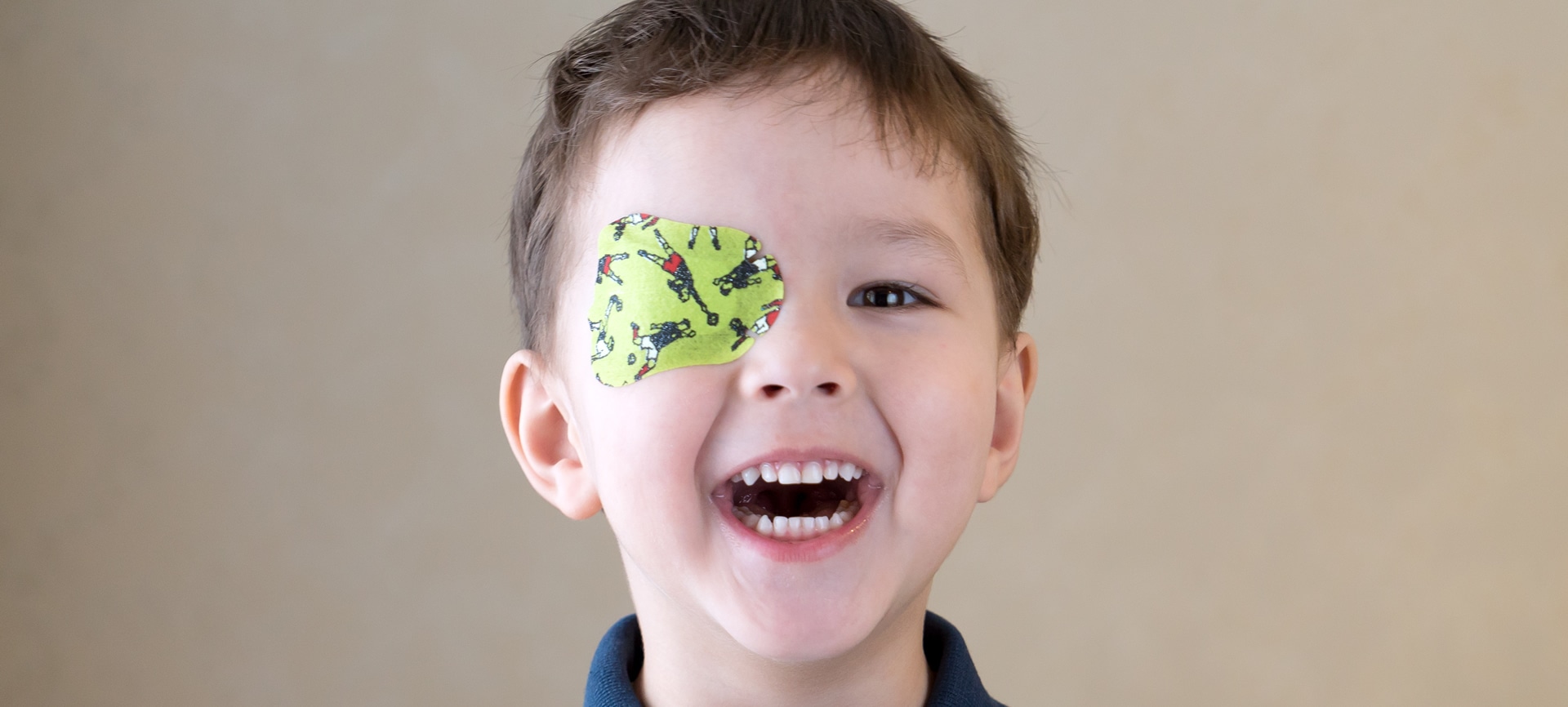As part of children’s eye health and safety month, we want to provide some helpful tips for parents about patching their child’s eye for certain eye conditions.
Why Wear An Eye Patch As A Kid?
[toc]Amblyopia, otherwise known as lazy eye, is the most common reason for a child to wear an eye patch. In order for a child’s vision to develop properly, both eyes must work with the brain. When a child develops amblyopia, one eye doesn’t work as well, and the brain will turn off signals from that eye. Over time, without any treatment, the vision in that eye can be lost permanently so eye patches are used over the good eye to strengthen the weak eye. Other common reasons for children to wear an eye patch include strabismus or post eye surgeries.
How Does Eye Patching Help Children?
The good eye (the stronger eye) is patched to encourage the development of better vision in the “lazy eye” (weaker eye). Patching is most effective when begun as early as possible. The length of time a child needs to wear the patch will vary.

Keeping an eye patch on a child can be a parent’s worst nightmare! After all an eye patch can be uncomfortable and actually hinder vision so anyone’s natural reaction would be to rip it off. Once patching becomes part of your normal routine, it can be easy to do… it’s just getting to that point that can be the difficult bit! It’s likely to require a lot of creativity and a bit of parental control.
Our Top Five Eye Patching Tips For Parents
Here are some tips to encourage your child to cooperate. You’ll be sure to find something that will make the process easier.
1. Use a reward system
There are a number of patching reward posters available online, which can be used as an incentive. After a successful day of patching, your child can remove their patch and place it on the poster – and when the poster is completed, your child will have a brilliant wall poster to celebrate their achievement.
2. Try out different types of patches
You might want to experiment a little to find the patch that works best for your child. The adhesive on some patches can irritate a child’s skin, so it might take a few tries to find the patch that suits them best.
3. Get in on the act
Why not try wearing a patch when at home to encourage your child to wear theirs. If your child thinks it’s normal to wear a patch then they are more likely to want to wear the patch themselves. Make them proud of their eye patch. No need to hide! You could also put patches on their favourite dolls and teddy bears. Just don’t allow anyone under the age of 10 to patch their eye without being directed by a doctor as unnecessary patching on children can lead to vision impairment.
4. Get arty
There are a variety of patches available, which allow children to decorate their own patches, making the whole process a lot more fun. Not only will it be more fun, it will also help develop your child’s hand-eye coordination.
5. Play dress up
Trying out different characters and roles will allow your child to use their imagination and express their creativity. Why not dress them up as their favourite superhero or have a pirate themed day?
While the patch is on, your child should do close up activities, such as colouring or reading. Using a patch can be a time consuming process for both you and your child, but it’s important to not give up! It’s important to explain the reasons for using a patch and the importance of sticking with it so your child stays motivated.
Ready To See Clearly?
Focus has a 100% 20/20 vision success rate for all common short-sighted prescriptions using it’s A-LASIK technique.

